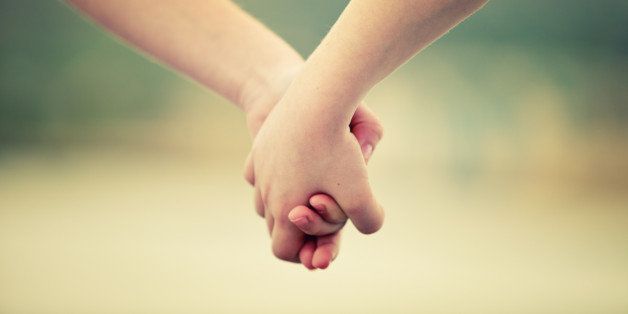
I often wonder how I will explain tragedy to my children one day. The news lately has been filled with stories of plane crashes and war.
If I, as an adult am heartbroken by what I see and read, how can a child handle this?
When I was younger and the Gulf War had started, I was living in the Middle East. I overheard the news announcer on the radio talking about potential poison gas attacks in our area and what we could do to protect ourselves.
I wanted so much to talk to an adult about the fear I felt. But I was scared that if I talked about something, it would happen. So I started duct taping all our windows at home to protect us in case something happened. When my parents saw this, they knew that they had to address my fears.
A lot of us have a tendency to not talk about tragedy with our children. And that is only natural. We want to protect them more than anything. We want them to never feel fear.
But in this digital age, children will find out about world events. We want to make sure that they process the information they hear in a way that allows them to continue to live fearlessly and with love.
Here are some steps we can take to talk to our children about tragedy:
1. Let them be vulnerable
It is important to tell children the truth about what is happening. You only need to tell them the basics. You do not need to go into details.
Children deserve the truth from us. It builds trust and allows them to see that talking about their fears is OK. Understand that they will have an increased sense of fear, and being vulnerable is a part of what makes them human. Reassure them that they are safe.
As human beings, all of us are want our feelings to be heard. Children want to know that their emotions are valid.
When they are allowed to be open and show their authentic selves, they learn to build human connections. And it is these connections that show them that love is greater than fear.
2. Tell them that you love them
It's a simple act, but there is great power in saying "I love you." Words can have a life of their own.
As Maya Angelou said, "Some day we'll be able to measure the power of words. I think they are things. They get on the walls. They get in your wallpaper. They get in your rugs, in your upholstery, and your clothes, and finally in to you."
Speaking love into the life of your child tells them that they are a part of something greater than themselves. When a child knows how it feels to be loved, they find something unconditional in a world filled with conditions.
3. Maintain a routine
It is important that you keep your calm and maintain the same routines. With routine comes stability. Routine also shows children that fear cannot dominate our lives.
When children see adults continue to live boldly, they are reassured that fear cannot debilitate them.
4. Show them to look for the helpers
One of my favorite quotes is from Mr. Rogers: "When I was a boy and I would see scary things in the news, my mother would say to me, 'Look for the helpers. You will always find people who are helping.'"
When tragic events occur, it is easy to lose hope.
When Malaysian Airlines flight 17 was shot down from the sky over Ukraine, we watched the news in horror and sadness. We also learned that on this flight were several top AIDS researchers. They were people who spent their lives pursuing something greater than themselves. As it was said at the press conference, these were people "who focused on what can be built, not what can be destroyed."
After the Boston Marathon bombing, stories of hope and courage emerged. One such story was that of Carlos Arredondo, who came to the marathon to honor his son who was killed in Iraq. He turned his pain into courage when he used his own clothes to prevent one of the victims from bleeding out.
Like these stories, tragedy often brings out acts of courage and heroism. In the midst of war and conflict, we see ordinary people do extraordinary selfless things. We are inspired by the lives of the people who have passed on.
Somehow, in the midst of darkness we are reminded that there is light.
As Jodi Picoult wrote, "There's always going to be bad stuff out there. But here's the amazing thing -- light trumps darkness, every time. You stick a candle into the dark, but you can't stick the dark into the light."
This is what we need to show our children: To concentrate on love instead of hate, on the people helping instead of the people destroying.
This article originally appeared on Spirit Miner. You can follow Smita on Facebook and Twitter